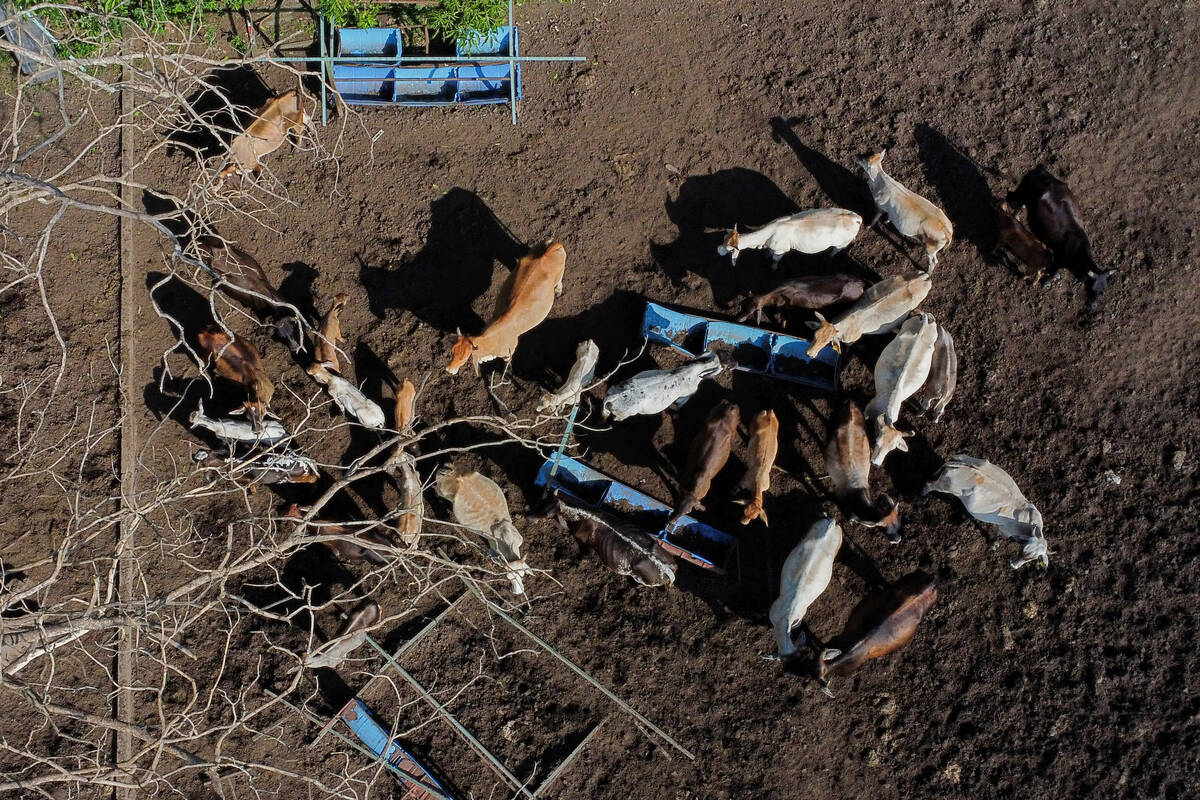Bull market ending | Experts predict a plateau in demand and drop in prices
Farmers need to be nimble marketers now that the multi-year bull market in grain is probably over.
That was a common theme underlying the Cereals North America conference held in Winnipeg Nov. 6-7.
The 2006-13 market and its bullish dynamics are probably done.
“If I use my forecast (of future grain prices), farm income is going to collapse to levels we haven’t seen … going back to 2005,” Dan Basse, president of the Chicago analytical firm AgResource, said in the conference’s opening address.
Read Also

Cattle smuggling worsens outbreak in Mexico
Cattle being smuggled across Mexio’s southern border are making a screworm outbreak much more difficult to control.
A host of analysts predicted a world in which the 2013-14 year sees crop importing countries rebuild depleted stockpiles and a 2014-15 in which stocks build to much greater levels if the world produces average crops.
That could lead to corn prices falling to just slightly above $3 per bushel, which would make it hard for many farmers to make money on any of the big crops, considering that they all track corn to a great degree.
AgResource analyst Bill Tierney said farmers probably won’t see $3.25 corn in 2013-14 but probably will in 2014-15.
“It just doesn’t seem to me that the market is willing to see those kinds of lows this year,” said Tierney, noting that a pre-ethanol era supply and demand model would justify $3.25 per bu. corn now.
“I do think they will see those kinds of lows next year.”
Since the mid-2000s, crop prices have joined the overall commodities bull market rally.
Crops broke from long-time low and relatively flat prices to burst upward in repeated spikes, offering farmers much better prices than in the 1982-2006 period.
Many analysts have said the bull market was driven by growing demand from biofuel production, steadily increasing consumption in Brazil, Russia, India and China and speculative money flooding into all commodities to avoid lackluster stock markets. It was an era in which crop and meat production had trouble keeping up with demand.
Prices exploded when major crop production problems occurred, as in 2007 and 2012. It was a period in which crop farmers who produced good crops could easily make fat profits.
However, analysts at Cereals North America said those underlying factors are fading and the era of high demand chasing low supply will end if adequate crops are grown.
Ethanol demand in the United States and biodiesel demand in the European Union are not increasing.
The steady growth of demand for more corn to produce ethanol and more vegetable oil crops to produce biodiesel has disappeared and isn’t likely to return.
Per capita calorie consumption increases have greatly slowed in Brazil, Russia, India and China, suggesting there will not be the same ever-increasing demand for crop and meat imports in coming years.
Speculative investors have been abandoning commodities, especially agriculture, for months and returning to the stock markets.
“The money has been leaving agriculture,” said Basse.
“There’s no investible story.”
Farmers will need to be agile and attentive marketers if prices turn lower for a number of years, said Reuters agricultural markets columnist Gavin Maguire.
“If you are a grower with a lot of supplies on hand, you have to be a bit more disciplined than you have been over the past few years as far as taking selling opportunities,” he said in an interview.
The fundamental situation has changed radically for supply and demand, reversing the market psychology of buyers being worried about running out of supplies.
“We’ve never actually undergone such an aggressive change in supplies one year to the next, from so low to so high, right at this time when we seem to be seeing a plateauing of demand,” said Maguire.
Farmers will need to sell into rallies and pull the trigger after just a day or two of rally.
“The rallies we see won’t last as long as before, with weeks-long accelerations of prices,” he said.
Karl Skold of Bunge North America said high prices have brought in acreage, investment and a desire to produce crops.
“We have taught the world how to grow corn,” said Skold.
Demand still exists for cereal and oilseed crops, but farmers’ ability to increase supplies faster than de-mand growth is beginning to be felt in the market.
“Farmers have money, and I think they’re going to plant everything,” said Skold.
“They’re not going to not plant.”
All the analysts agreed that a major crop disaster would reverse their opinion about the likelihood of a lasting bear market in crop prices.
However, just average crops in most of the world’s regions in the next year will allow stockpiles to grow to levels that will damage farmer profitability and reduce their desire to seed every acre.















